- 22 May 2020
How to Land Strikes in Muay Thai – The 5 Ways of Attacking by Bruce Lee
The art of striking is the ability to land strikes against an opponent. A fighter who is able to effectively land a strike against his or her opponent is considered a good striker, regardless of their fighting style or background.
While the individual techniques will change depending on a fighter’s martial art background, any fighting style can be effective with the right timing, speed, and technique. The reason Muay Thai is considered the most effective striking art is that it is the most versatile. Known as the art of 8 limbs, Muay Thai utilizes your hands, legs, knees, and elbows to create an efficient fighting system.
Many years ago, Bruce Lee wrote about the 5 ways of attacking in his book Tao of Jeet Kune Do. In his search to find the most effective striking systems, Bruce Lee studied multiple striking techniques and learned the different methods of attacking.
Bruce Lee categorized striking into 5 distinct categories:
- Single Direct Attacks (SDA)
- Attack by Combinations (ABC)
- Progressive Indirect Attacks (PIA)
- Attack by Draw (ABD)
- Hand Immobilization Attacks (HIA)
This article is going to break down these 5 principles of striking and apply them to Muay Thai to show you why Muay Thai is the most effective striking system in the world.
Single Direct Attacks
The Single Direct Attack is a strike the utilizes a single technique aimed at a target. These single attacks are basic strikes like jabs, teeps, and kicks that are thrown without setups or feints.
High-level Muay Thai fighters are experts in landing Single Direct Attacks without needing to disguise them with a combination, feint, or counter.
If a fighter possesses high-level speed and timing, they can throw kicks and punches that can land before an opponent can react on defense. The greater that gap in skill level between fighters, the easiest it is to land a direct strike against an opponent.
Timing is the most important element of landing direct line attacks. If you attack someone when their defense is set and ready to block, it will be difficult to land a clean direct strike. Good timing will allow you to throw attacks when your opponent is not ready to block the strike without needing to set up your strike.
Single Direct Attack Examples:
The best fighters are able to throw straight-line attacks without needing to set them up. Littewada is one of the most explosive fighters in Muay Thai and possesses an amazing left kick. You can see in this clip below how he lands a left kick with pure speed, timing, and power.

Here is another example of Yodsanklai using speed and timing to land a body kick. Notice how he waits patiently for the right moment to strike.

The teep is another weapon that is a great direct strike. With a good teep, you can disrupt your opponent’s offense and control the distance in a fight. The teep is the Muay Thai equivalent to the Boxing jab, it can be thrown without needing to set it up.
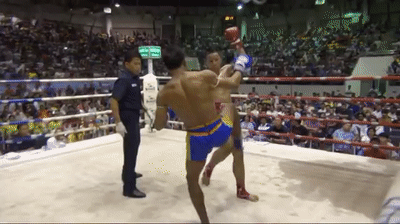
Attack by Combinations
Attacking by Combination is throwing multiple strikes together in a sequence. While a single direct attack can be devastating if it lands, throwing strikes in sequence can be more devastating to an opponent.
The use of combinations can be highly effective in Muay Thai. Usually, the last strike of a combination is the intended strike, with the previous strikes being used to set up that final blow.
What makes combinations so effective is that you use a series of strikes to disguise the one that you want to land. For example, if your goal is to land a low kick, you might set that low kick up with a jab, jab, left-hook, then a low kick. By throwing the punches before the low kick, you will create a diversion to distract your opponent, which can create the opening for the low kick.
It should be important to note that combinations have the risk of becoming predictable. If you use the same series of combinations against a smart fighter, they will read start to read your patterns. This is why good fighters are able to vary their combinations, so fighters are not able to predict what they are trying to land.
While shorter combinations can be effective, practicing long multi strike combos are not realistic in a fight situation. As a general rule, if your combination is longer than 3-4 strikes, it will not work because your opponent will respond. No good fighter is going to allow you to throw long combinations without hitting back unless they are hurt in the fight.
After you throw a few strikes at your opponent, you have to brace your defense for a counter-attack. This is why shorter combinations are more effective.
Attack by Combination Examples:
In this sequence, Yodsanklai patiently waits for his opponent to move forward, adjusts his feet to stay in range, and fires a 1-2 attack which stuns his opponent, opening up his right uppercut. While he throws a multiple strike combination, each strike is intended to reach its target.

The following gif shows a beautiful combination that is used to set up a low kick. Notice the rhythm of the punches and the slight pause before throwing the low kick.
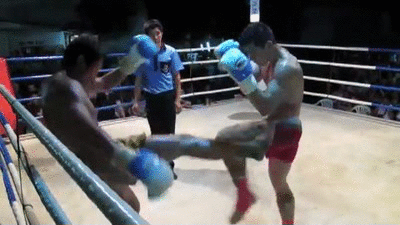
In the following clip, Littewada showcases how to set up the spinning back elbow (from Southpaw position) utilizing a lead jab. Notice how he throws a few jabs to gauge the distance and distract his opponent and fires the spinning back elbow. This is a short and sweet combination that works.
The most effective combination are the ones that combine speed and perfect timing to land.
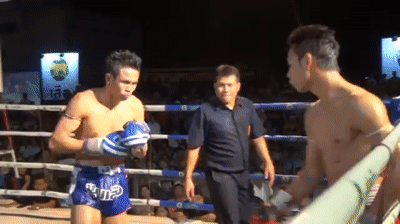
Littewada has some of the most explosive combinations in Muay Thai. In this clip he uses a quick jab-cross followed by a right hook-left kick. The speed, timing and accuracy of the combination are deadly.

Progressive Indirect Attacks (Feints)
A Progressive Indirect Attack is an attack that utilizes a feint or a false strike, in order to create an opening for a second follow up attack. Bruce Lee labeled this a progressive attack since the feint is the beginning motion for the follow-up attack.
The feint works the same way that a combination does, except you don’t actually throw the strike. Instead of throwing a jab, you can feint a jab, get your opponent to react to that jab and then throw a strike.
All good fighters utilize feints to try to get their opponents to react to their attacks and create holes in their defense. Against an elite opponent, you will not be able to land a direct strike unless you throw a feint first, then strike.
Feinting can create small openings in your opponent’s defense that are opened for a split second, allowing you to take advantage. When you throw a feint, you should immediately follow the feint up with a strike.
There are a huge range of feints that you can do in Muay Thai. Any technique that you throw in Muay Thai can be feinted, and used to disguise your attacks.
Progressive Indirect Attack (Feints) Examples:
This knockout by Littewada showcases a perfect example how to utilize a teep. Notice how Littewada throws two hard teeps first, before faking the teep and stepping forward with a straight left hand that knocks his opponent out.
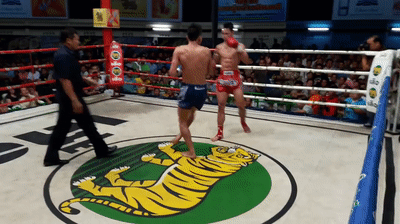
In this sequence Superbon fakes a kick, then quickly fires a right kick against his opponent. The feint creates an opening for the second attack.
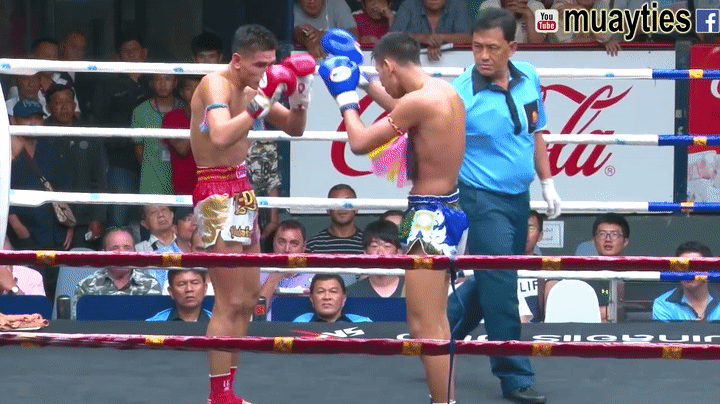
This fake knee followed by a left elbow strike is a thing of beauty. A good feint will open up your opponent’s defense for a brief moment, allowing you to take advantage.
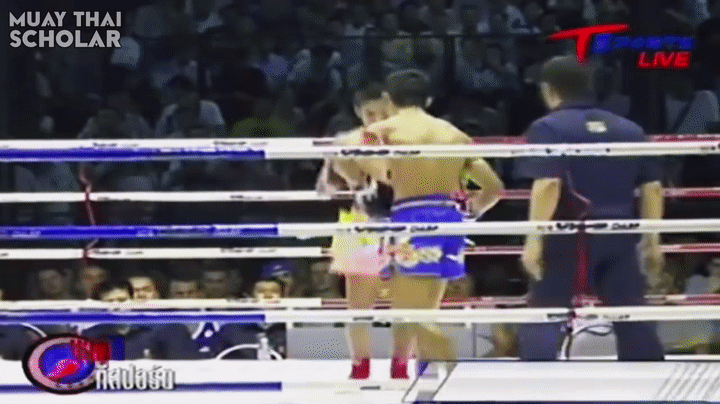
Attack by Draw (Counter Striking)
The fourth method of attack is to Attack by Draw. This is a principle that requires you to draw out an attack from your opponent so you can counter their attack.
Counter striking utilizes the art of evading, parrying, anticipating or blocking an opponent’s attack and immediately following it up with a strike of your own.
Fighters can use the lean back as an excellent evasive technique that they use to make their opponent miss while coming back with a kick of their own. You will also see this happen after a fighter blocks an incoming attack with a strike of their own.
When a fighter throws an attack, there is a brief moment when their defense is not set properly. It is in that moment of vulnerability, that counter strikes are able to take advantage of their opponent.
Some fighters will bait an opponent into throwing a strike, so they can counter off that attack. Those tactics require high fight IQ in order to show an opening to an opponent, and quickly close that opening with an attack.
A subset of the Counter Strike is an anticipation attack. If you anticipate your opponent to throw a left kick, you can immediately chop out their leg as they throw the kick. Anticipation is a form of counter striking that requires you to attack at the same time as your opponent. These strikes require good timing and rhythm.
Attack by Draw (Counter Attacking) Examples:
The following clip showcases Littewada waiting for his opponent to throw the right hand, as he quickly shifts to the left and goes for the 1-2 left elbow combination. The speed and timing that Littewada displays in this sequence is second to none. It is pure instincts and brilliance on display.
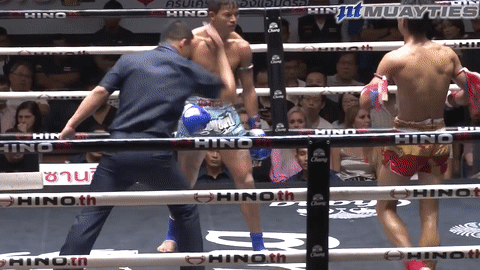
Here is another beautiful display of Littewada showcasing his deadly ability to counter attack when his opponent’s strike. Notice how he steps forward as his opponent goes for the strike. Beautiful example of counter striking.

This clip from Sam-A showcases a quick trigger reaction after his opponent throws the right kick. Notice how Sam-A comes back with punches instantly and goes for the sweep in one quick sequence.
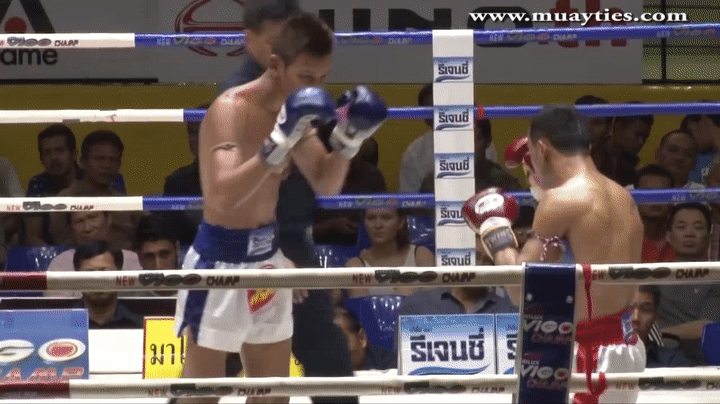
In this final example, Saenchai waits for his opponent to throw an inside low kick and steps forward with a straight left punch. Notice the timing as he steps into the punch to connect on Damian Alamos’ chin.
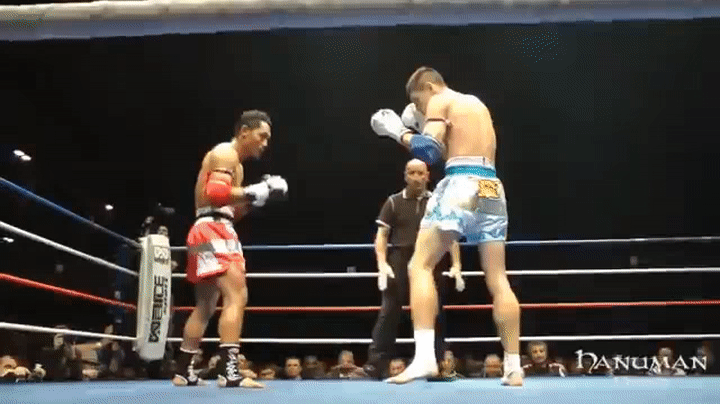
Hand Immobilization Attacks
The final way of attacking is the Hand (Leg) Immobilization Attacks. These attacks require you to control or trap your opponent’s hands or legs, while executing a strike against them.
You see this a lot in Boxing when a fighter will throw a punch and tap their opponents guard lower, which opens them up for a follow-up attack.
The hand control is a favorite method for fighters who throw elbow strikes against a well-guarded opponent. As the fighter steps forward, the tap down the guard of their opponent, and use the same arm to land the elbow strike while the guard is down.
The use of hand control is very effective in creating openings against opponents that have guards that are very tight and hard to penetrate. This can also be effective against fighters in close range.
While Bruce Lee focused on catching punches or controlling an opponents hands, in Muay Thai, you can apply this principle to catching kicks and following with an attack or sweep.
Hand Immobilization Attack Examples:
In this clip, Lamsongkram attacks his opponent with a straight knee, and then uses the hand control to quickly throw a right elbow strike that lands. Notice how he quickly pushes down his opponent’s left defense and throws the elbow at the same time.
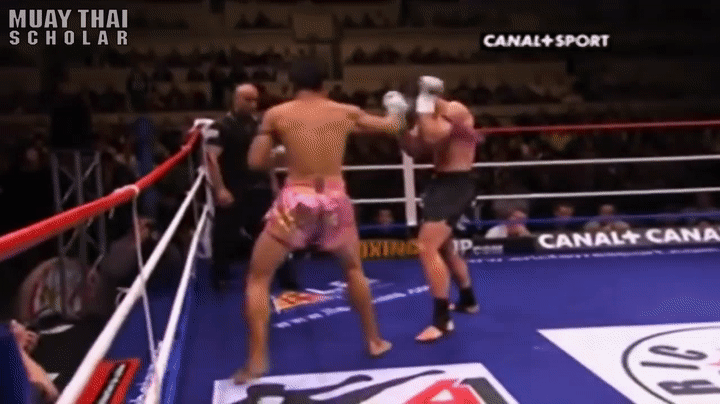
In this clip, Manasak taps his opponents lead guard down, which exposes and opening to throw the left elbow strike. Hand control is the best way for elbow fighters to land their strikes. By pushing down your opponent’s guard, you open them up for a quick attack.
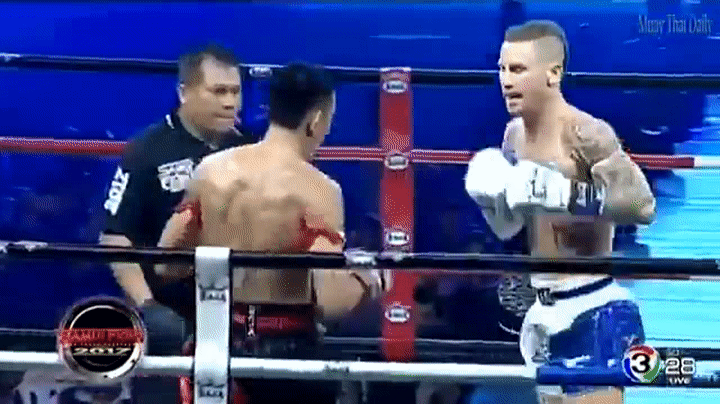
In this example, Saenchai catches Damian Alamos’ teep and throws consecutive left straight punches as he off balances him. This is a good method to create an opening in your opponent’s defense.

Final Thoughts

While Bruce Lee wrote about the 5 ways of attack many years ago, the core principles still apply today.
The best Muay Thai fighters in the world are able to utilize all five ways of attack to make themselves extremely dynamic in the ring. When you watch a fighter like Saenchai or Littewada, you will notice how many offensive weapons they utilize in the course of a match.
They can hit you with a single direct attack, throw a combination, use feints to disguise attacks, use hand control, and counter your attacks all within a single exchange.
While you won’t have the same skill set as the top Muay Thai fighters, you can work on developing your ways of attack in sparring and try to apply it to your game. The key is to focus on developing one thing at a time, and trying to master it.
You won’t be able to master everything at once, but if you can add a few different ways of attack to your game, you will become a much more effective striker.
“Adapt what is useful, reject what is useless, and add what is specifically your own.” – Bruce Lee
